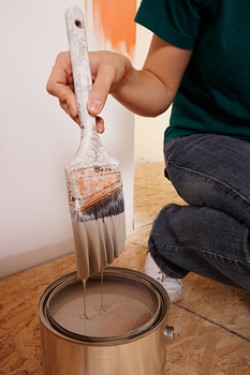Get the Lead Out: Understanding – and Avoiding – Lead Poisoning
Get the Lead Out: Understanding – and Avoiding – Lead Poisoning
 Big box home improvement stores have thrown down the gauntlet, holding summertime paint sales that practically begyou to renovate.
Big box home improvement stores have thrown down the gauntlet, holding summertime paint sales that practically begyou to renovate.
But don’t reach for that scraper just yet. If you’re living in a home built before 1978 (if you live in Rochester, the chances are good, considering a whopping 87 percent of the city’s housing was constructed prior to 1950), there are real, often under-appreciated health risks associated with stirring up dust from old, lead-based paints. Risks are especially concerning for children’s developing brains and nervous systems. What’s more, symptoms of lead poisoning might not be obvious until effects surface later in life in the form of learning disabilities, difficulty concentrating, reproductive troubles, and more.
Wondering why lead was added to paint to begin with? Or how you can protect yourself and loved ones from exposure risks during your next renovation project? Watch the clip below to hear environmental health expert Dr. Katrina Korfmacher discuss some history, risks and safety considerations related to lead paints. (You also can learn more about URMC’s efforts to eliminate lead poisoning in the Rochester area, here.)
…
…
Remember: Lead poisoning is preventable, but its effects are irreversible. Practice prudence when you paint, sand or scrape.
For additional national and local resources, check out:
- http://www.epa.gov/lead/
- http://www.letsmakeleadhistory.org/
- http://www.cityofrochester.gov/lead/ (Alternately, you can call 585-428-LEAD with concerns.)
- http://www.monroecounty.gov/eh-leadpoisoning.php (Dial 585-753-5087 to learn more.)
###
* The above story is adapted from materials provided by University of Rochester Medical Center
![]() ______________________________________________________________________
______________________________________________________________________




















